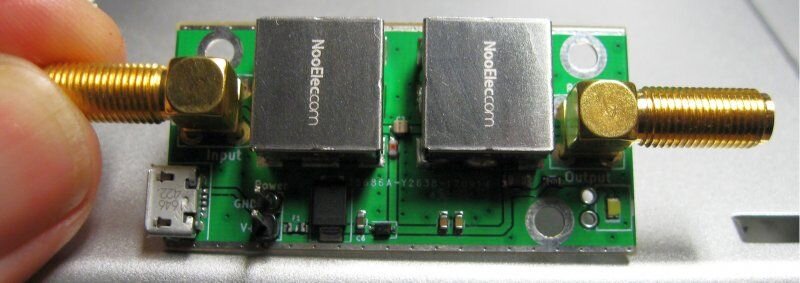Also am currently hit very hard by the flu.

Get better there Brett, the flu has been making the rounds.

So... will be interesting to see if you guys get something similar or not if you're getting a DD card
Don't know as I won't have any processing ability until maybe Wed. but weather is not very good now.
I don't think it would work because you would have RHCP and LHCP on the same coax line at the same time, and there is no way to separate them after that. Once its in the coax, RHCP and LHCP are indistinguishable. They must be separated at the dish feed.
The only way to get around two coax lines is if you only had either RHCP or LHCP, but not both simultaneously.
KWX, first if you change the 2 probes around at the input of the combiner then you change the polarization.
This is where Brett and me may be at disagreement.
It's the phase offset the determines polarization of the feed so both coaxes have both polarization's present
before it gets to the combiner.
The septum feed does this in the waveguide via the polarizer (septum). Though we have not had much luck with that feed as of now.
What Brett suggests is an idea that I have had as well,
One possibility might be to put 4 probes in your can antenna, all 90 degrees apart. Then use 2 90 degree combiners, 1 for each adjacent pair of probes. And 2 sawbirds. But you would need 2 coax lines.
But this could cause a waveguide tuning problems with both probes sets at the same distance from the back of the waveguide. It "might" work if the probe sets for each polarization are at different distances from the back. But with any of this remember that you split the power you are receiving by 2 plus any losses.
Example: RHCP is at a 1/2 wave from the back.
LHCP is at a 1/4 wave from the back.
So there's one suggestion,
Here's the other:
It uses 2 hybrid combiners and 2 splitters.
The 2 combiners are switched in connections so that one output is LHCP and one is RHCP, requires 2 output coaxes.
The idea is pretty much the same as yours KWX but there is nothing after the hybrid combiners but coax. Though you still do the same as you would a single line in terms of amps and filtering but for both. What you describe above would only need the 0 degree combiner to combine the 2 probes into 1 coax but....
Summing this into one coax I don't think is possible.
Maybe it's possible if your receiver can determine the two polarization's but not likely. The isolation isn't enough. As Brett stated above.
The job of the combiners is to create isolation between the two polarization's while catching the circular polarization of interest.
You would want the above diagram in a module such as the hybrid splitter, the use of strip lines and matching devices can make this possible and a very small block.
In my opinion I would approach Minicurcuits with the idea and see if it's possible and if they can make it.
As a block all one would need to do is hook up 4 coaxes and you're done.
They might even already make it.





